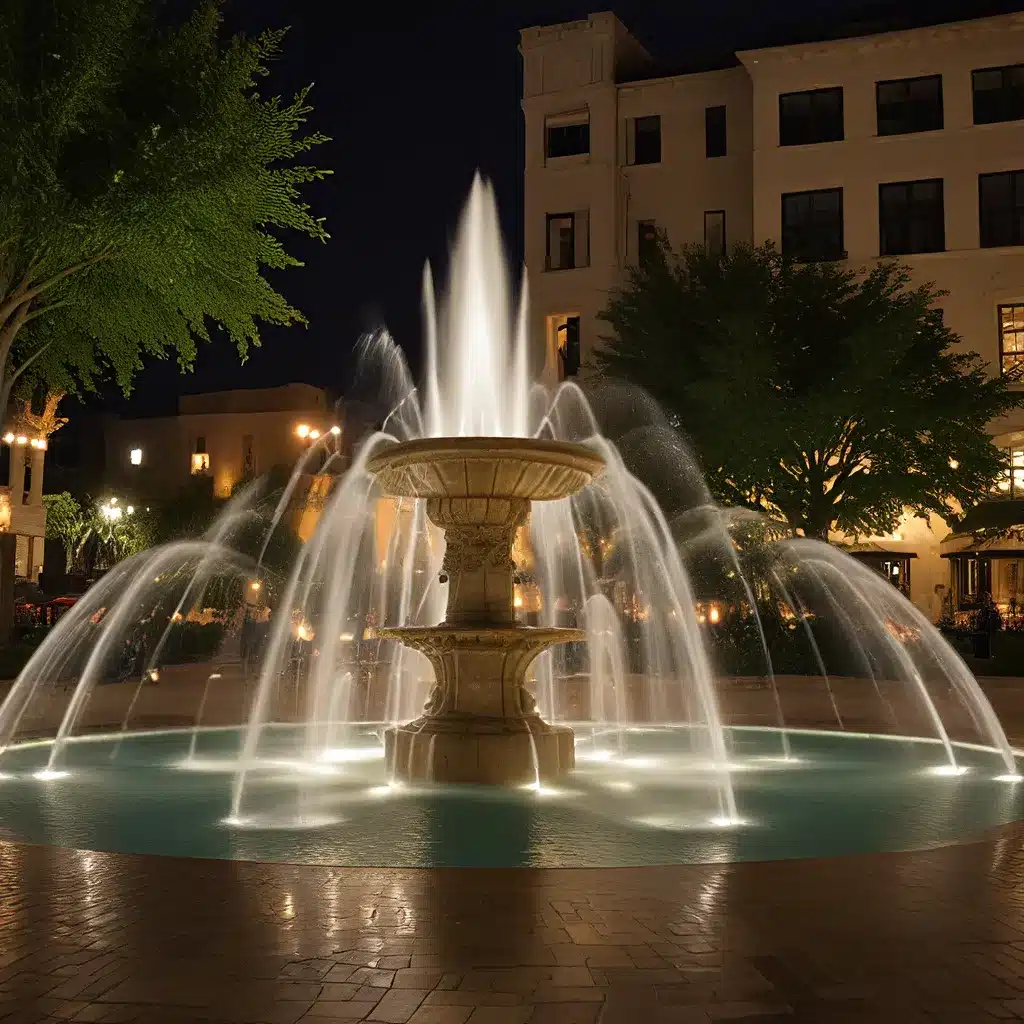
Fountain Design Essentials – Welcome to Fountain Lights
Fountain Design Essentials – Welcome to Fountain Lights

As a self-proclaimed fountain enthusiast, I’ve always been fascinated by the intricate dance between water and light. It’s a captivating combination that can transform even the most mundane outdoor space into a breathtaking spectacle. But have you ever wondered what lies beneath the surface of these mesmerizing water features? The secret, my friends, lies in the synergy of hydraulics and fountain lighting.
Have you ever watched a fountain in awe, marveling at the way the water seemingly defies gravity, gracefully arching and cascading in a symphony of motion? Well, the magic behind this aqueous display is all thanks to the power of hydraulics. Hydraulics, a branch of science that deals with the mechanical properties of liquids, is the driving force behind the intricate water movements we see in fountains.
The intricate network of pipes, pumps, and nozzles that make up a fountain’s hydraulic system is carefully designed to control the flow, pressure, and trajectory of the water. These components work together to create the mesmerizing patterns and shapes we admire, whether it’s a towering jet or a delicate sheet of water flowing over a sculptural surface.
But hydraulics is more than just the physical manipulation of water; it’s also about harnessing the power of pressure and buoyancy. By strategically positioning the water jets and adjusting the pump speed, fountain designers can create the illusion of weightlessness, as if the water is defying the laws of gravity. It’s a delicate balance of science and artistry, and it’s what gives fountains their enchanting, almost supernatural, quality.
While the hydraulic system is the foundation of a fountain’s mechanics, it’s the lighting that truly brings the water feature to life. Fountain lighting is a carefully choreographed performance, where the play of light and shadow transforms the aquatic display into a mesmerizing work of art.
LED lighting technology has been a game-changer in the world of fountain design. These energy-efficient, programmable lights allow for a wide range of color options, dynamic effects, and precise control over the illumination. From vibrant hues that dance across the water’s surface to subtle, mood-setting color schemes, the possibilities are endless.
But it’s not just about the color; the placement and timing of the lights are equally important. Strategically positioned spotlights can highlight specific water jets or cascades, drawing the eye to the most captivating features. And by synchronizing the lighting with the hydraulic system, fountain designers can create a truly immersive, synchronized experience – one that leaves onlookers in awe.
Designing a truly remarkable fountain is no easy feat. It requires a delicate balance of hydraulic engineering and lighting artistry, all while considering factors like the surrounding environment, the intended use of the space, and the desired aesthetic.
One of the key challenges in fountain design is achieving the perfect harmony between the water’s movement and the lighting. It’s not just about throwing a few lights into the mix; it’s about understanding how the water’s shape, velocity, and trajectory will interact with the illumination, and then fine-tuning every element to create a mesmerizing, cohesive display.
This is where the expertise of specialists like fountain lighting professionals comes into play. These individuals possess a deep understanding of both hydraulics and lighting, allowing them to create fountains that are not only visually stunning but also engineered to perform reliably and efficiently.
As with any field, the world of fountain design is constantly evolving, with new technologies and techniques emerging to push the boundaries of what’s possible. One exciting development is the integration of IoT (Internet of Things) and smart automation into fountain systems.
By incorporating sensors, microcontrollers, and wireless connectivity, fountain operators can now remotely monitor and control every aspect of their water feature’s performance. This allows for real-time adjustments to the water flow, lighting sequences, and even the choreography of the display – all from the comfort of a smartphone or tablet.
But the innovations don’t stop there. 3D printing has also made its mark on the fountain industry, allowing for the creation of intricate, custom-designed nozzles and sculptural elements that simply weren’t possible with traditional manufacturing methods. And as materials science continues to advance, we’re seeing the emergence of more durable, weather-resistant, and environmentally-friendly fountain components.
As a lifelong fountain enthusiast, I’ve had the privilege of witnessing the evolution of these captivating water features firsthand. From the grand, majestic fountains of centuries past to the cutting-edge, tech-infused displays of today, the synergy between hydraulics and lighting has always been the driving force behind their mesmerizing allure.
And the best part? We’re just scratching the surface of what’s possible. As new technologies continue to emerge and innovative minds push the boundaries of what we thought feasible, the future of fountain design is poised to reach dizzying new heights.
So, the next time you find yourself captivated by the shimmering water and dazzling lights of a fountain, take a moment to appreciate the intricate science and artistry that goes into creating such a breathtaking spectacle. Because in the world of fountains, the true magic lies in the harmonious interplay of hydraulics and lighting – a synergy that never fails to leave us in awe.
Share to :
Subscribe to our newsletter for the latest in fountain design, innovative lighting ideas, and exclusive tips straight to your inbox. Join the community shaping the future of water features.

Rapid delivery to your doorstep.

Excellence in every product.

Great value for your investment.

Assistance at any hour.
Fountain Lights — Illuminating creativity in every splash!
Copyright © 2023. All Right Reserved